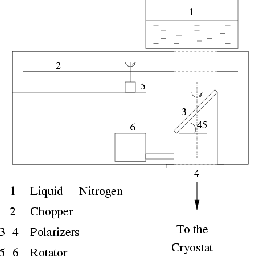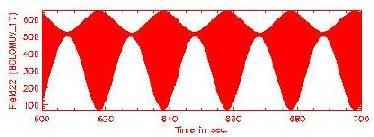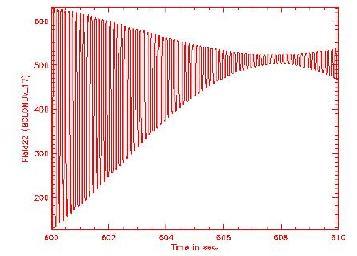
You can find here the summary
with more pictures than words of the polarized bolometers' calibration
(353 GHz) . More details are given on magique in /Archeops/Document/Note/Polarisation/NP_note3.ps
and in NP_note4.ps
(forthcoming within the next few days !).
Method:
Liquid nitrogen is used as a radiation source and is placed above the cryostat on a x,y-table to allow its centering on the chosen bolometer. It actually relies on a box containing mainly a support to rotate a polarizer (inclined by 45 degrees on the figure) and a chopper to allow a lock-in detection.

Data :
We performed several kinds of measurements: (1) with a single polarizer rotating in the box;(2) without any polarizer, (3) with a fixed polarizer below the box and one rotating. When a polarizer is rotating in the box, the raw data have the following shape. One can notice the sinusoidal shape expected on the enveloppe. The chopper's modulation at 8 Hz fills the enveloppe on the first plot. The second plot is a zoom on the first one and shows the high and low levels of this 8 Hz modulation.


Reduction:
We then performed a lock-in detection at 8 Hz to extract the signal. To determine the polarizers' direction, we need a reference intensity which we obtain by removing the rotating polarizer (2), everything else left unchanged.

The intensity in green is the reference intensity and is roughly constant as expected when the source is non polarized.
The last step is the calculation of the ratio between the red curve and the green one and its fit by the theoretical result. One can see the excellent agreement between theory (blue) and measurement (red) on the following plot. By doing this fit for each pair of bolometers, we can find their relative angle by the phase between their maximum response. We here get 56.4 degrees which is compatible with the expected 60 degrees considering the measurement uncertainties.

Please send any comment to ponthieu@isn.in2p3.fr